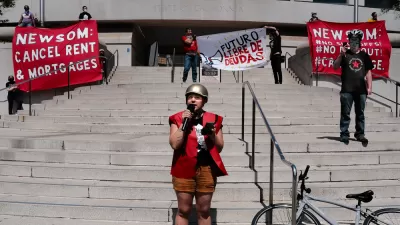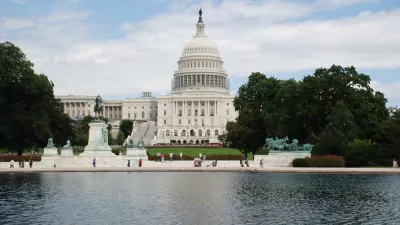To ensure families stay in their homes and stay safe during the COVID-19 pandemic, the federal government should extend the CDC's eviction moratorium and other rent relief measures through the new year.

To slow the spread of COVID-19 and protect families during the pandemic, the Centers for Disease Control and Prevention (CDC) passed an eviction moratorium in September, prohibiting landlords from evicting renters facing financial hardship. The moratorium, set to expire at the end of the year, has provided a lifeline for families who face losing their homes.
Things haven't improved for much of the country. In November, a third of Americans said they feared facing eviction or foreclosure in the next few months. With the moratorium's expiration and the end of other financial support like extended unemployment benefits looming, many Americans face deep financial uncertainty in the new year. Without a renewed moratorium and rent relief, argues Mary K. Cunningham, people who owe back rent and those having trouble making rent payments will continue to face housing insecurity as we head deeper into winter. Even with the current moratorium in place, tens of thousands of evictions have still been filed during the pandemic as landlords seek out loopholes, and without full rent relief, many tenants are sinking deeper into debt.
Federal relief would also help small landlords who rent to low-income people of color, many of whom risk losing their properties to large companies. The accelerated loss of affordable housing to redevelopment could have a powerful impact on future housing availability for low- and middle-income families.
FULL STORY: Extending the CDC Eviction Moratorium Would Keep Families Housed and Prevent the Spread of COVID-19

Planetizen Federal Action Tracker
A weekly monitor of how Trump’s orders and actions are impacting planners and planning in America.

Maui's Vacation Rental Debate Turns Ugly
Verbal attacks, misinformation campaigns and fistfights plague a high-stakes debate to convert thousands of vacation rentals into long-term housing.

San Francisco Suspends Traffic Calming Amidst Record Deaths
Citing “a challenging fiscal landscape,” the city will cease the program on the heels of 42 traffic deaths, including 24 pedestrians.

Amtrak Rolls Out New Orleans to Alabama “Mardi Gras” Train
The new service will operate morning and evening departures between Mobile and New Orleans.

The Subversive Car-Free Guide to Trump's Great American Road Trip
Car-free ways to access Chicagoland’s best tourist attractions.

San Antonio and Austin are Fusing Into one Massive Megaregion
The region spanning the two central Texas cities is growing fast, posing challenges for local infrastructure and water supplies.
Urban Design for Planners 1: Software Tools
This six-course series explores essential urban design concepts using open source software and equips planners with the tools they need to participate fully in the urban design process.
Planning for Universal Design
Learn the tools for implementing Universal Design in planning regulations.
Heyer Gruel & Associates PA
JM Goldson LLC
Custer County Colorado
City of Camden Redevelopment Agency
City of Astoria
Transportation Research & Education Center (TREC) at Portland State University
Jefferson Parish Government
Camden Redevelopment Agency
City of Claremont





























